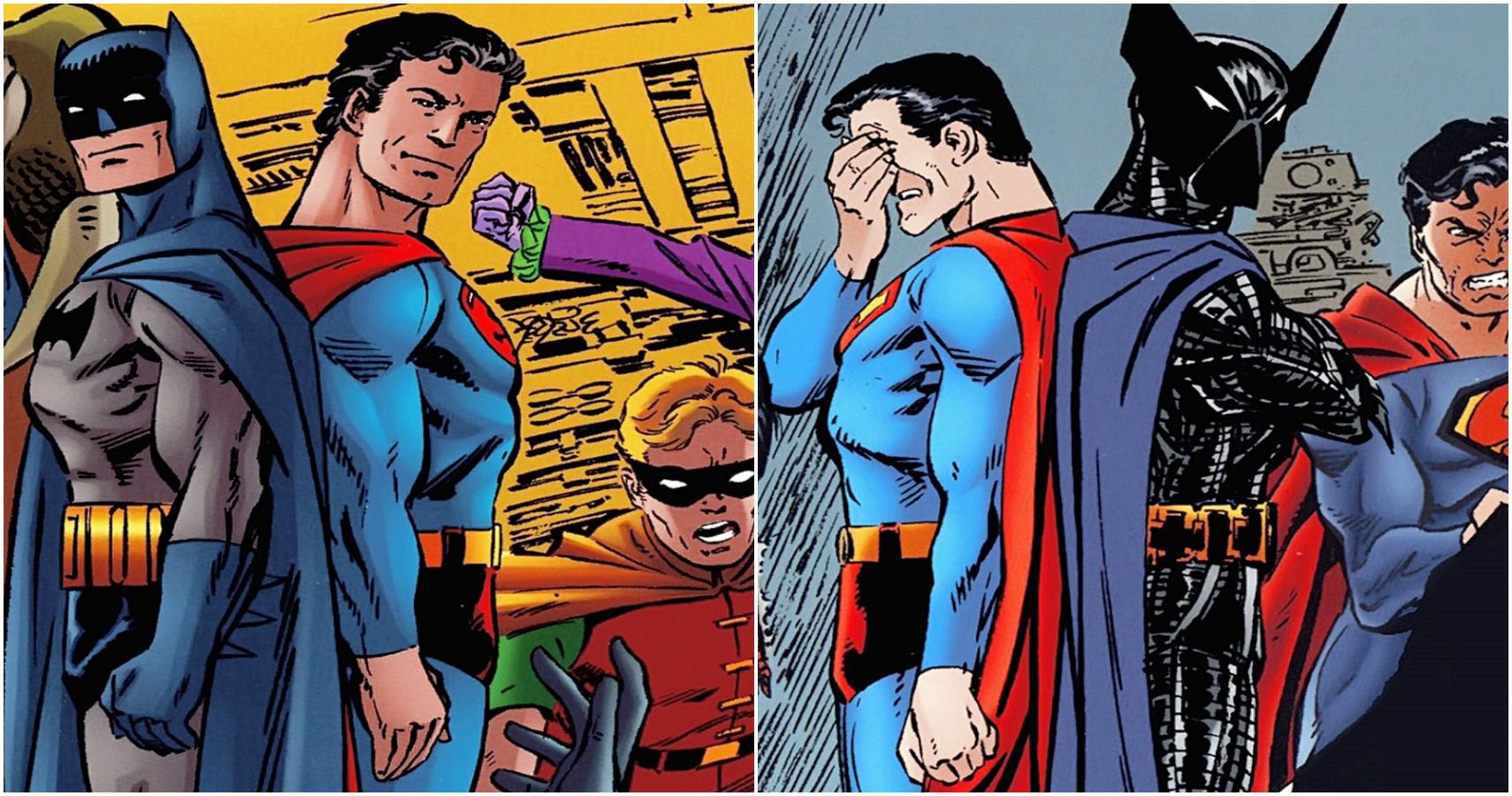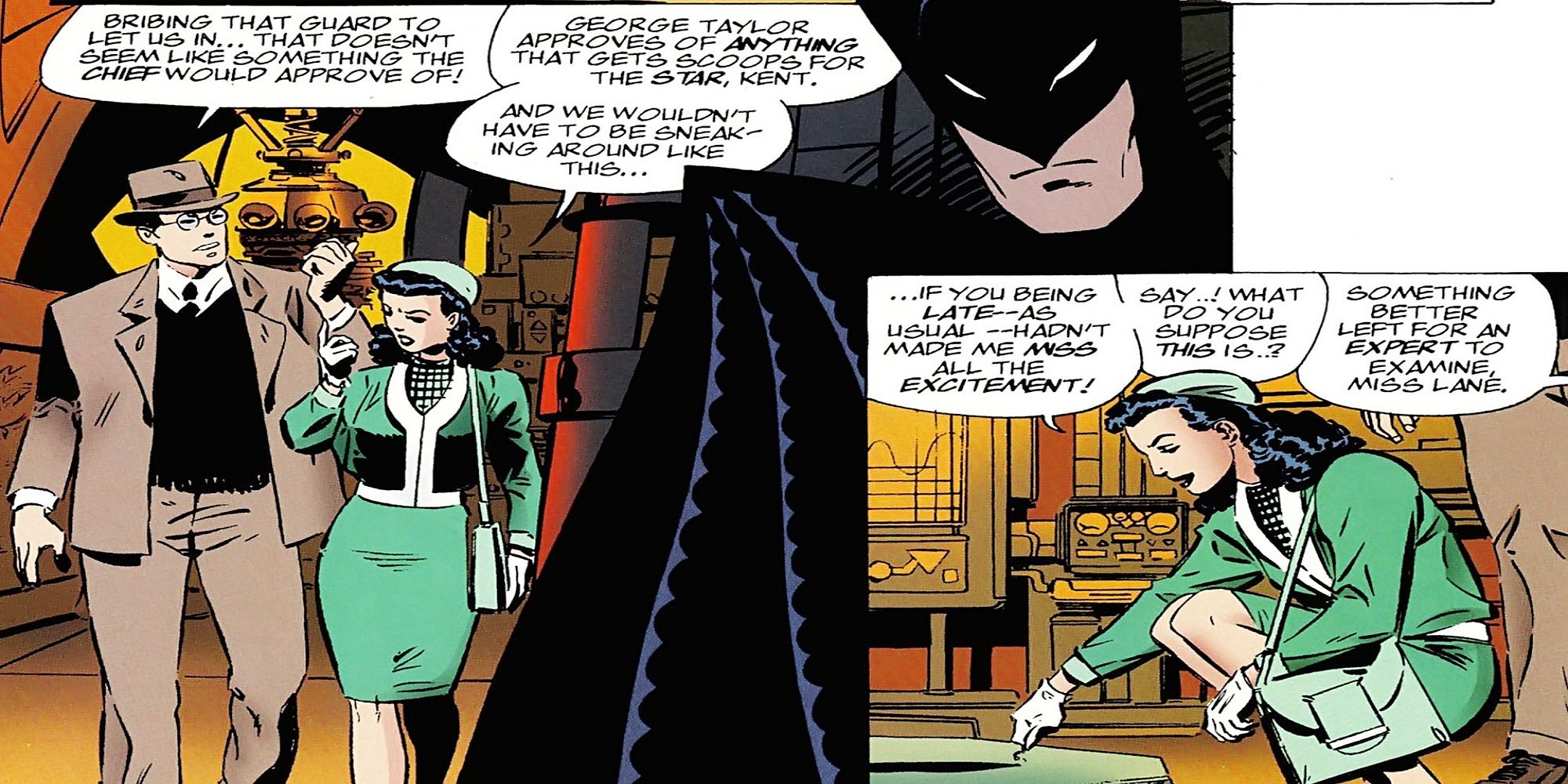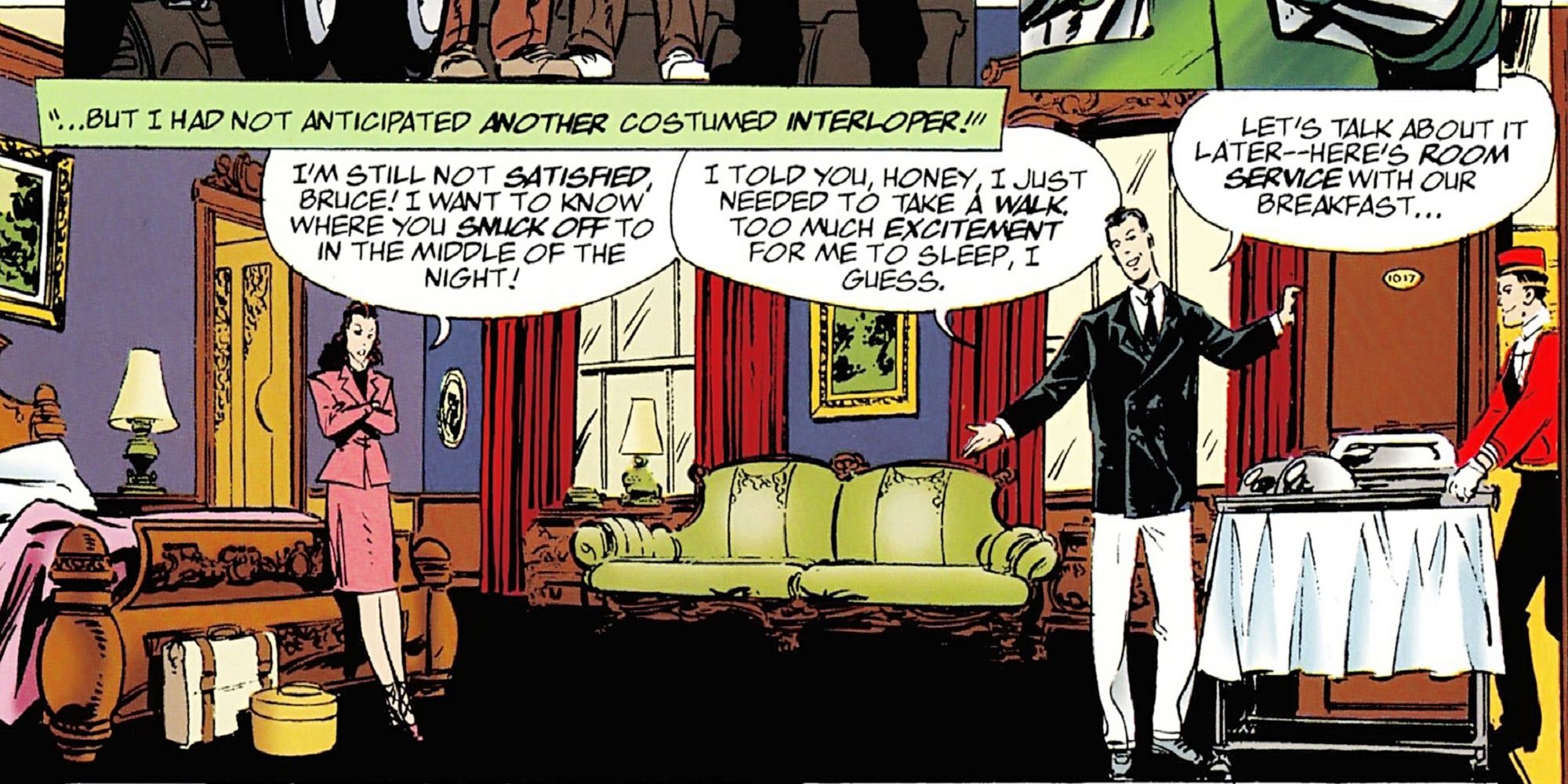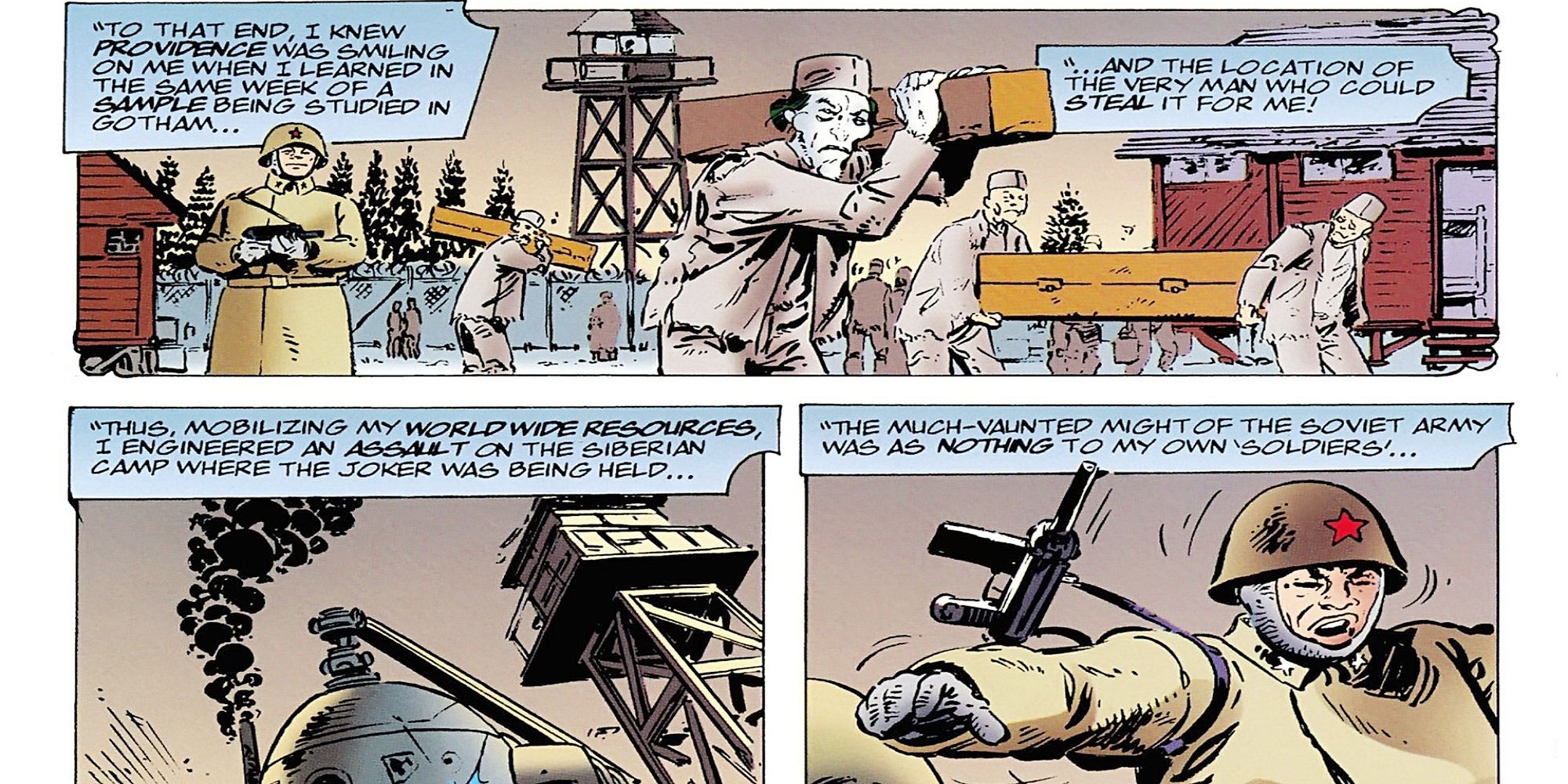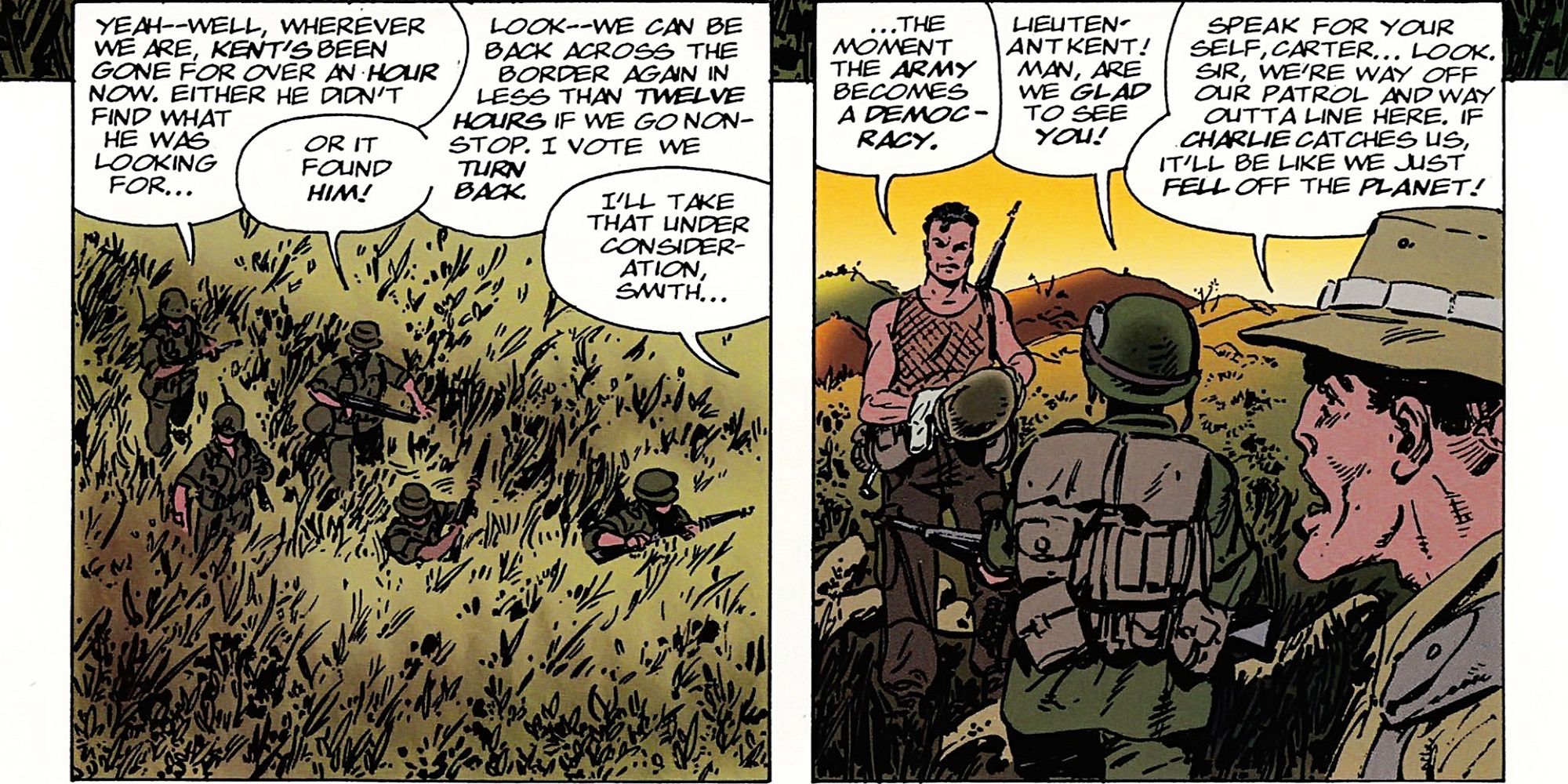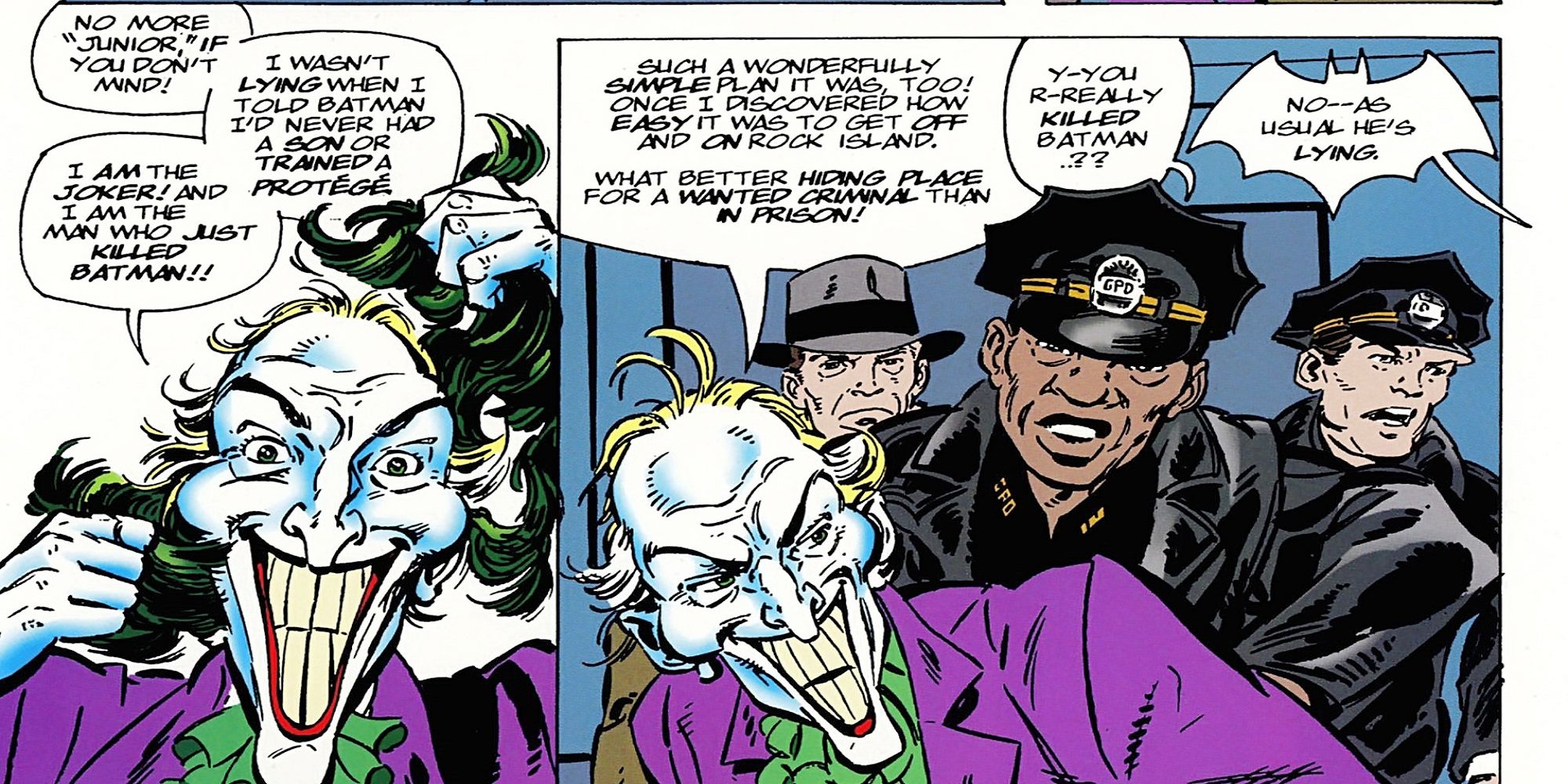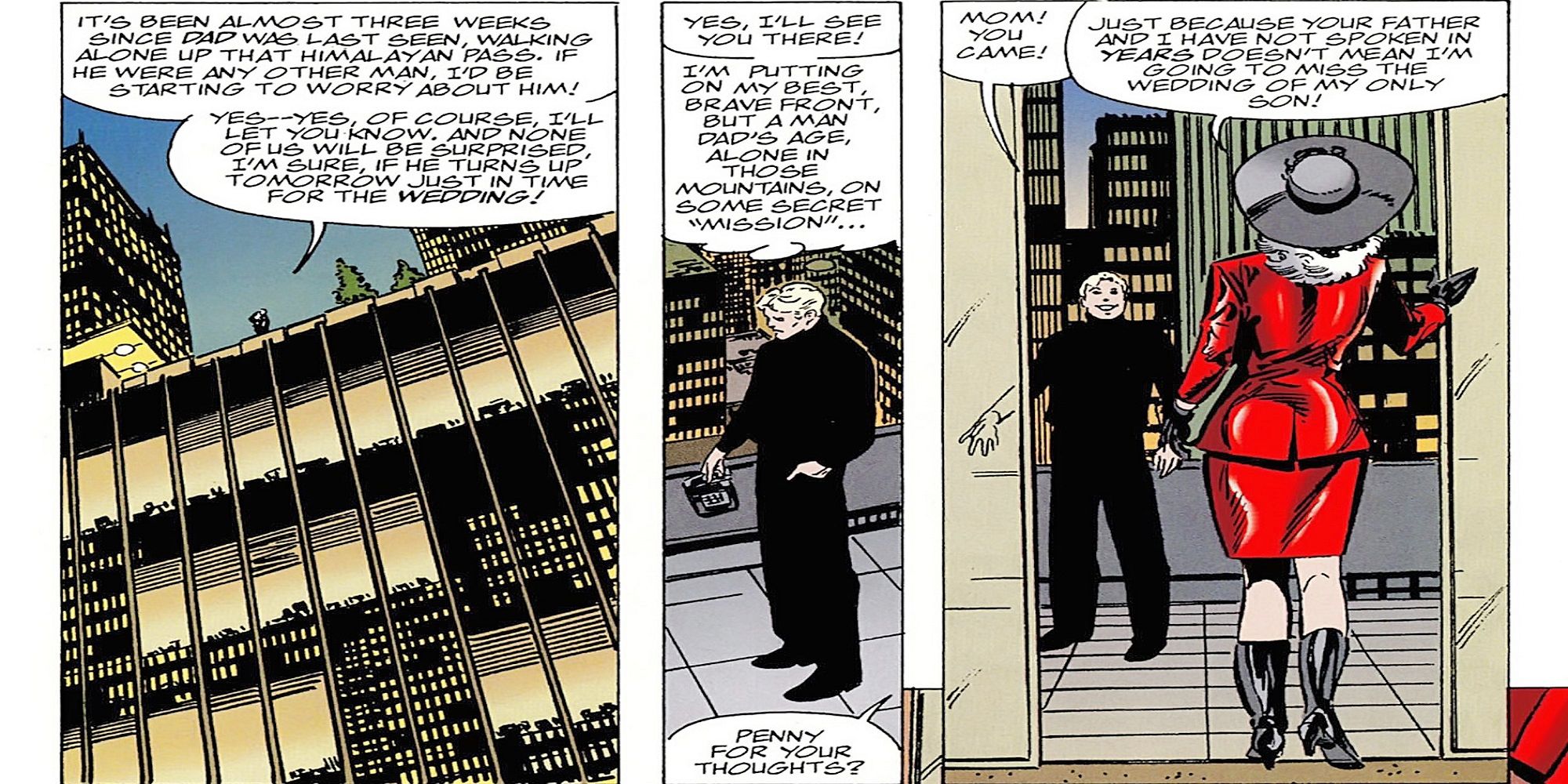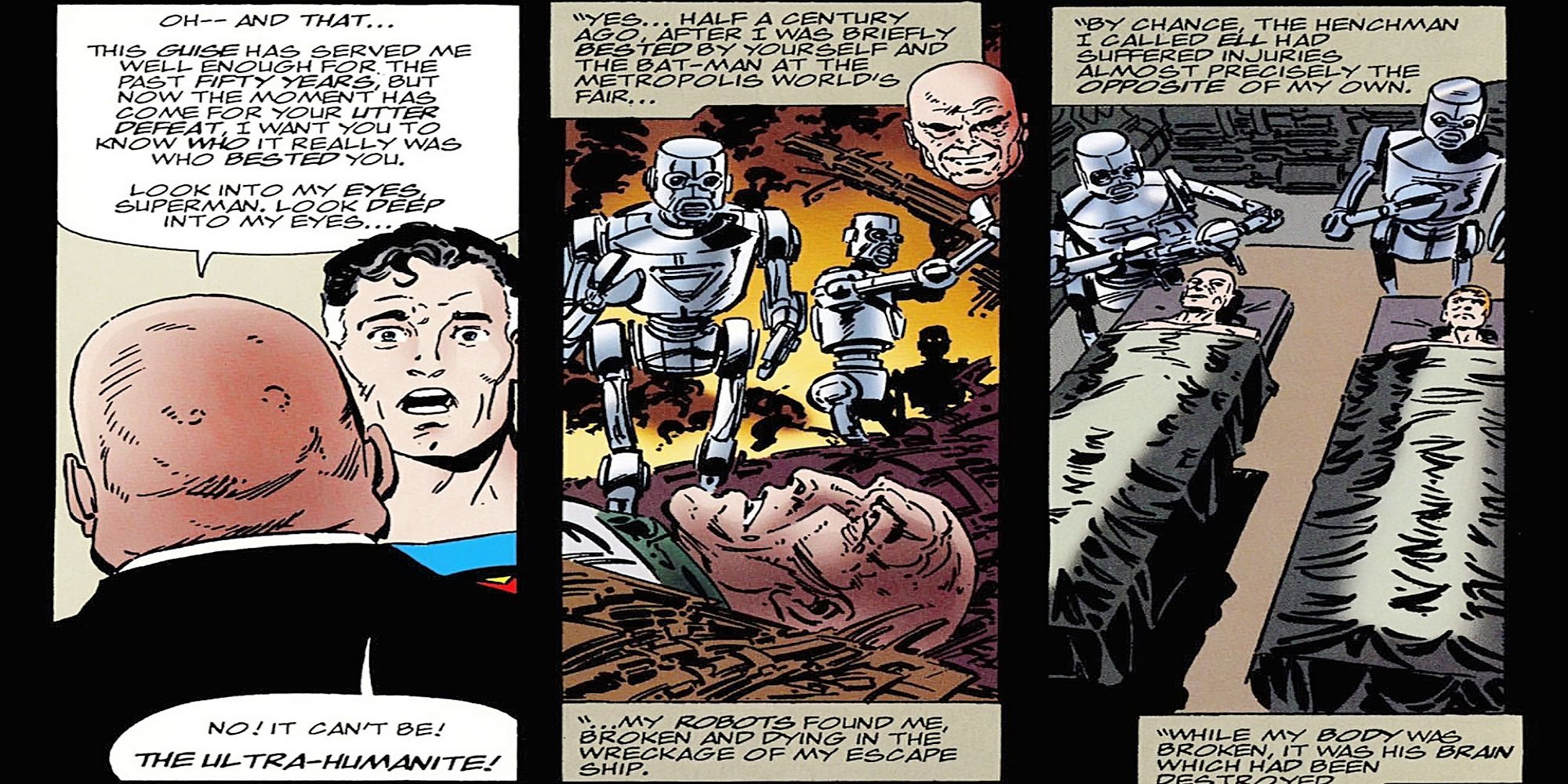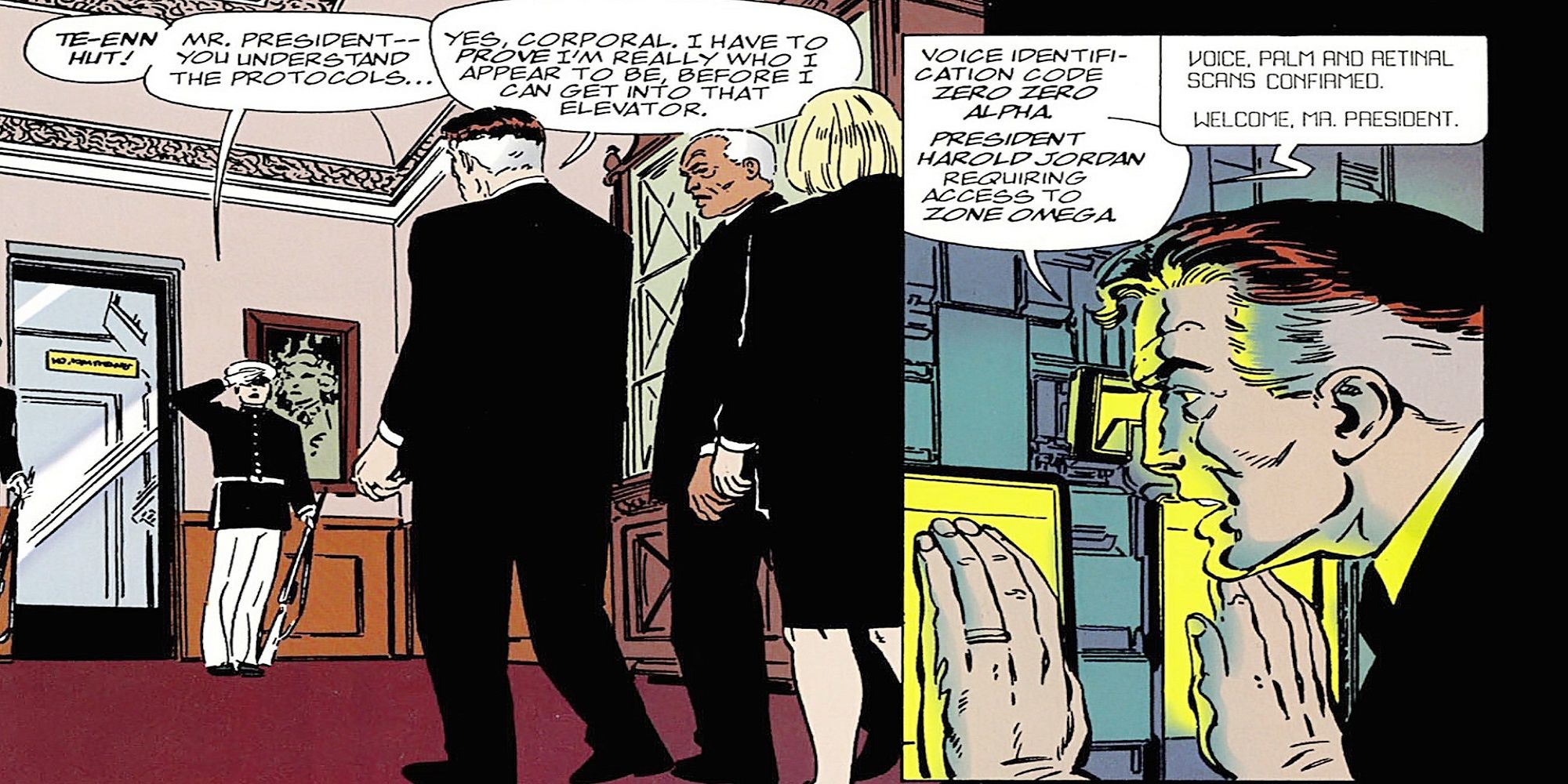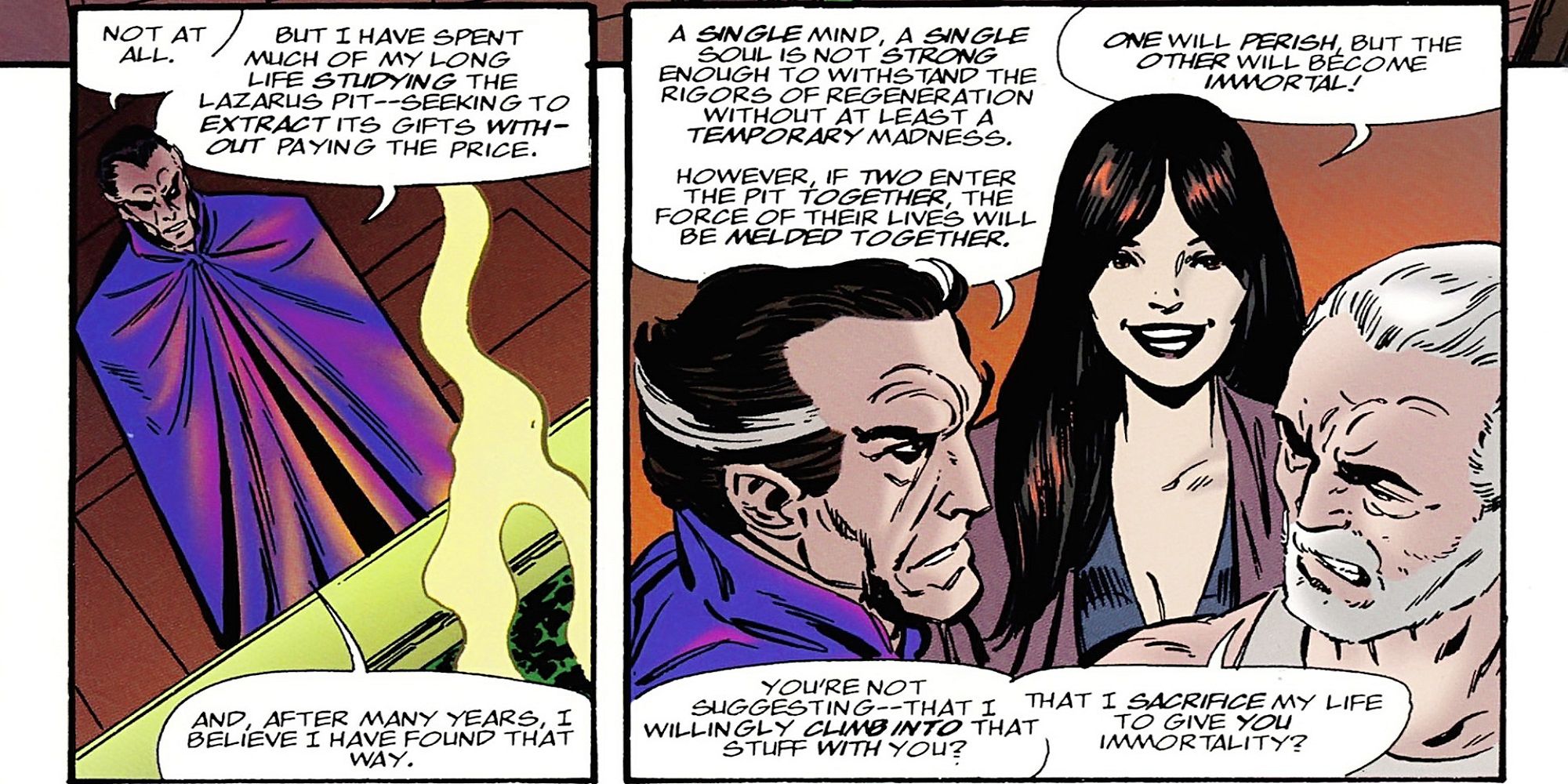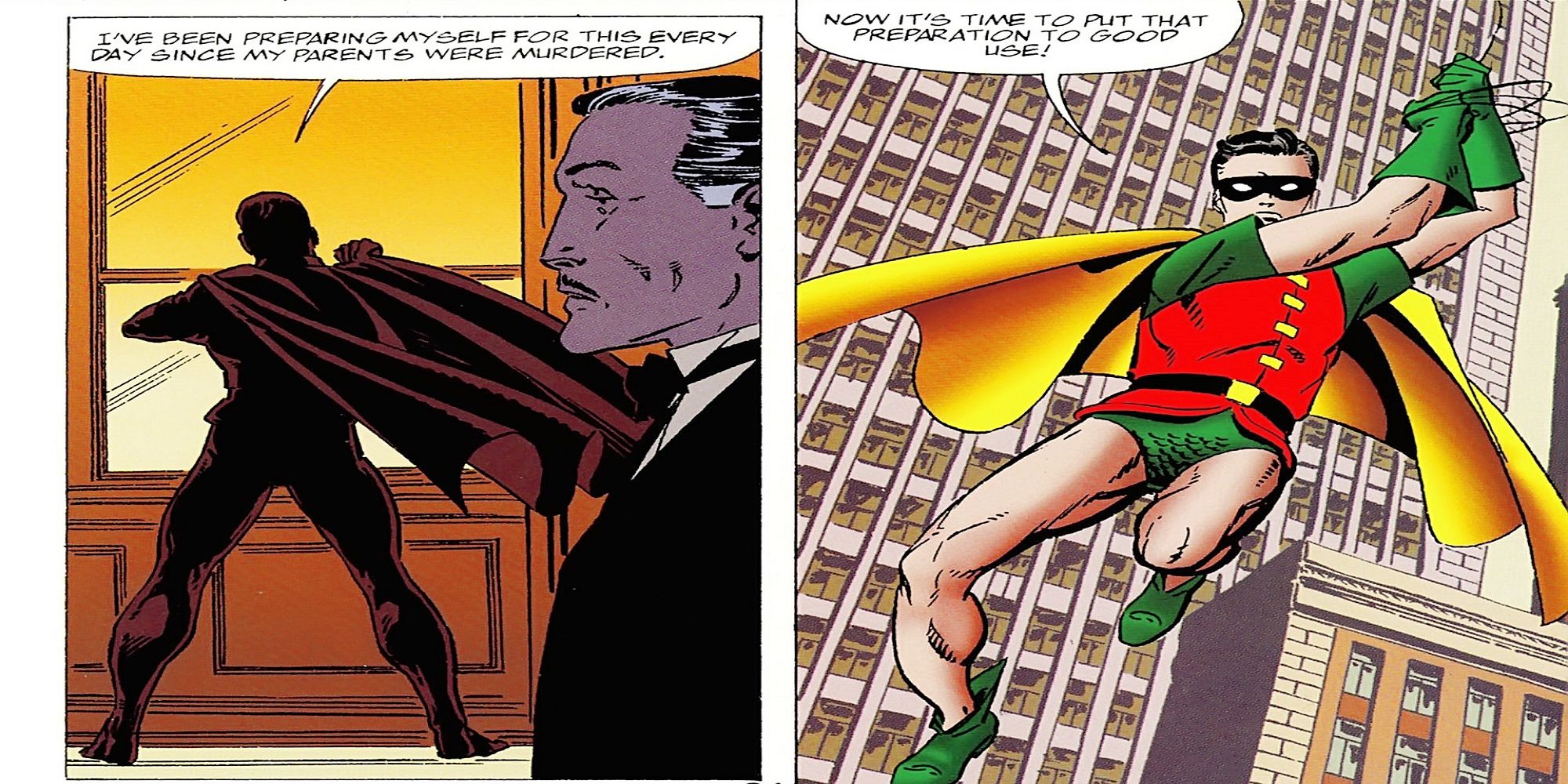What if all of DC's superheroes were actually allowed to age? Thanks to the sliding timescale and an unwillingness to get rid of older heroes, this concept has been foreign to comics for decades. But in 1999, John Byrne was allowed to write about exactly that—he told the story of Superman and Batman aging throughout the decades.
In a mini-series that spanned four issues, Byrne did a series of stories that spanned every decade from 1939 to 1999. Every story would center on a major story ten years apart from the last one, showing how the Batman and Superman families changed over the years. Freed from editorial interference, Byrne created his own universe that's still within the DC multiverse today.
10 George Taylor
John Byrne’s Generations pays a lot of respect to Golden Age Superman and Batman comics. In the first issue of the book, readers are shown Lois Lane and Clark Kent working for not the Daily Planet, but the Daily Star. And their boss isn’t Perry White, but George Taylor. This is because originally Clark Kent worked for George Taylor in the comics, and his first appearance dates back to 1939 in Superman #2. It wasn’t until 1940 that Perry White was introduced, and when the Golden Age Superman became Earth-Two Superman, he was suddenly employed by the Daily Star rather than the Daily Planet.
9 The Introduction Of Julie Madison
In the same way that Byrne pays homage to early Superman comics, he does the same with early Batman comics as well. The opening issue sees Bruce Wayne balancing his life as Batman with his relationship with Julie Madison.
Julie was the first romantic interest that Bruce Wayne ever had, and with the creation of Earth-Two became Bruce’s reason for trying to maintain a secret identity.
8 Joker Was Put In Soviet Prison
Joker’s effectiveness in this book seems rather low compared to the top-tier villain he was in the Batman comics by the time of the 1990s when Generations was published. At least, early on that’s the case. When Generations visits the late 1940s it’s discovered that Joker had not only spent plenty of time in jail, but the character had been jailed in both a Third Reich prison and a Soviet Slave Labor camp for five years. Luthor managed to save him for the sake of working together to take out Superman.
7 Clark's Kid Fights In The Vietnam War
During the late sixties, readers are shown a different era for Superman and Batman both. With America plunged into the Vietnam War, both of their sons are looking for a chance to prove their loyalty to the country. In Superman’s case, his son Joel had his powers stolen from him by Lex Luthor’s Gold Kryptonite, leaving him completely mortal. Eager to prove himself as the Son of Superman, he travels to Vietnam and winds up nearly killed after his platoon turns on him for being unnecessarily cruel.
6 Joker Kills Dick Grayson
Joker isn’t quite as deadly for much of the early parts of this comic, but in the 1969 part of the series, readers get to see a version of the character they’re more familiar with. Pretending he’s been locked up for decades, Joker masquerades as Joker Jr., baffling Dick Grayson, and Bruce Jr, who’ve become the new Batman and Robin. In the end, Joker actually succeeds with his trap for once, killing Dick Grayson—and causing Bruce Wayne Jr to take the role in his place to make the world believe he failed.
5 Bruce Wayne's Wife Is Unknown
There’s one mystery throughout much of Generations I that remains unsolved in the first book. It’s never actually revealed who the mother of Bruce Wayne’s children is. It’s mentioned that she’s frustrated with Bruce and Dick for bringing Bruce Jr. into the life, but that’s the limit.
Catwoman is never introduced in the comic, other than Bruce mentioning she “retired”, and Talia explicitly doesn’t appear until 1979. It’s entirely possible that it’s Julie Madison, but it’s perhaps a shout-out to Bruce’s playboy roots that readers are never sure who she is.
4 The Ultra Humanite Is The Main Villain
Mentioned near the end of the story is that Lex Luthor, Superman's primary villain, has been gone for decades. Using his technology, Ultra-Humanite swapped his mind with Lex Luthor's to take over his body. Afterward, he systematically destroyed Superman's life. He manages to kill every member of Superman's family with the exception of Superman himself, intending to take his powerless body after he invented a way to cure the permanent loss of power that comes with Gold Kryptonite. In the end, Superman defending himself results in Ultra-Humanite being killed, something that leads to Superman serving an entire decade in the Phantom Zone.
3 Hal Jordan's The President
However impossibly, Hal Jordan becomes the President of the United States in this timeline. With the Golden Age integrated so seamlessly into the world, the role of Green Lantern is played for much of the series by Alan Scott. Near the end of the book, Alan passes this ring on to Kyle Rayner, which is pretty accurate considering Alan was Kyle’s mentor as a Green Lantern in the actual comic during the ’90s.
2 Immortal Bruce Wayne
For a book that spans roughly a century, having the very human Batman around becomes more unbelievable with each passing issue. But Byrne comes up with the most elegant solution for Bruce managing to survive. The character meets Ra’s Al Ghul in the late ’70s and the two of them are introduced to a Lazarus Pit while still living. Both submerged, the one with the stronger will is granted immortality and eternal youth—and Bruce’s will proves the strongest, allowing him to not only regain his youth but become Batman again!
1 Bruce Was The First Robin
The last issue of the Generations book reveals a massive change to the lore of Batman. On a field trip to Gotham City thanks to his journalism skills, Clark Kent first meets Bruce Wayne in 1929, before either of them are adults. There, Lex Luthor attacks Gotham City once again, and Superboy swings in to stop him. But he doesn’t work alone, as Bruce Wayne suits up as well—but with him being far too young to be Batman, he actually takes the role of the first Robin!

